*We are a reader-supported website. When you buy through links on our site, we may earn a small affiliate commission at no extra cost to you. Home Media Entertainment does not accept money for reviews.*
2021 was a good year for Sony with some pretty big releases that surely draw a lot of attention in the top tier segment. And it seems that in 2022 there is no slow down as Sony is determined to bring forth even more technological innovation before anyone else and this is what our Sony TVs for 2022 consumer guide is going to look at as we anxiously await for the new models for further analysis.
This may seem as a surprise as Sony got us used to take their time when it comes to new technologies before they adopt them into their own releases but it seems in 2022 they will be the first out of the gate with the new QD-OLED panel that is manufactured by Samsung.
But this is not their only new development. In 2021’s release lineup Sony had a very stellar OLED presence and this year they are expanding it with new models bringing their total number to four.
As for their LED LCD TVs this year will be the first for some of their units featuring the new miniLED backlight that we saw last year in some Samsung offerings. This will be limited to one 4K and one 8K model while the rest of the LED LCD TVs will have to settle for the older FALD or Direct LED systems.
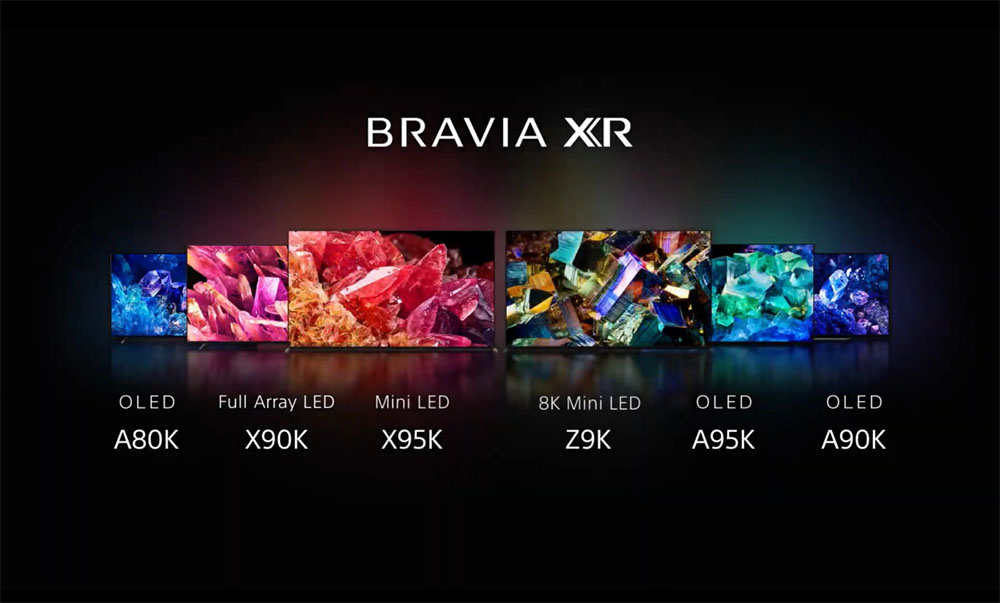
This year Sony has also redesigned their remote and they offer two variants depending the category of the TV.
A lot of technologies we saw in 2021 also make a return. The Cognitive Processor XR makes a comeback and Sony is expanding its use across their lineup. Their Acoustic Surface Audio system comes in various forms depending the category of each TV while Google TV 10 once again is used as the OS of choice.
Other features that seem to have remained the same is the use of 2 HDMI 2.1 ports due to the limitation of the MediaTek chipset that Sony is using, they still support the standard trio of HDR formats in the likes of HDR10, HLG and Dolby Vision with the HDR10+ still being absent while most of their releases, with the exception of the X80K and X72K, will come equipped with 100Hz/120Hz panels.
A few things that need mentioning is that in 2022 Sony will launch their first 42″ OLED while most of their TVs support the newly developed Bravia Cam. Also Sony is the only of the big three that supports IMAX Enhanced audio along with DTS and can even pass-through DTS:X through the eARC port. This can be particularly interesting as both Samsung and LG have completely ditched DTS for a couple of years now.
Let’s see next all Sony’s series in particular order.
Bravia XR Master Series
Bravia XR Master Series is Sony’s top of the line and for 2022 they have expanded it from two to four models.
The new Z9K is their only 8K TV that replaces the Z9J and will feature the new miniLED backlight. It still comes in the same 75″ and 85″ sizes showing that 8K is still considered an afterthought by most manufacturers.
In the OLED arena we find the A95K which is their only TV that features the new QD-OLED panel along with the A90K which is supposedly replacing the A90J but not exactly. You see, the A90K is not featuring the A90J’s heatsink and so it cannot be considered exactly a replacement of last year’s top offering. This is the reason why Sony kept the A90J as part of the 2022 release lineup in order to bridge the gap between the A90K and the A95K.
Also with the A90K being offered in only 42″ and 48″ Sony still needed a premium OLED that would be more affordable than the A95K in the 55″-65″ size market.
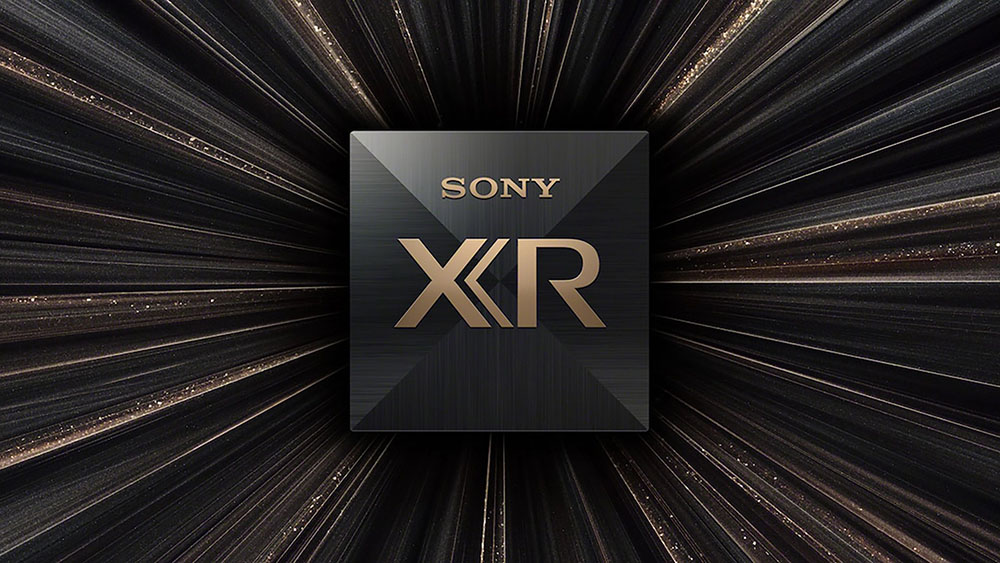
All Master Series TVs come equipped with the same Cognitive Processor XR, have 100Hz/120Hz panels, come with 2 HDMI 2.1 ports, with the exception of the Z9K that has 3, and use Google TV for their OS.
Other features includes the Acoustic Surface Audio+, the Z9K comes with the Acoustic Multi-Audio variant, support for Dolby Atmos, IMAX Enhanced and DTS along with DTS:X pass-through from the eARC port.
They also include Chromecast, Google Assistant, the Bravia Core streaming service from Sony, Netflix Calibrated Mode in the Netflix app, Calman Ready for picture calibration along with the new optional Bravia Cam support.
Bravia XR series
The Bravia XR remains for one more year their middle tier category and this has also been expanded as now we have two LED LCDs and two OLED models available.
The A80K replaces the A80J from last year while the A75K seems to be the newcomer as OLED technology pushes further into mid-tier ground.
The A75K doesn’t seem to be very different from the A80K with small design changes and a simpler audio system to be the most obvious ones.

As for their LCD TVs the X95K and the X90K replace the X95J and the X90J with the most obvious change being the new miniLED backlight in the X95K. The X90K still get the older FALD system so this one is not as big a change as its bigger brother.
In terms of specs and extra features the Bravia XR series is very similar to the Master Series.
This means we get the same Cognitive Processor XR, 100Hz/120Hz panels, 2 HDMI 2.1 ports and Google TV 10.0.
All of them support for Dolby Atmos, IMAX Enhanced and DTS along with DTS:X pass-through from the eARC port. The A80K comes with the more advanced Acoustic Surface Audio+ while the A75K uses the Acoustic Surface Audio variant. Both LED LCD TVs use the even simpler Acoustic Multi-Audio system.
Other features include Chromecast, Google Assistant, the Bravia Core streaming service from Sony, Netflix Calibrated Mode in the Netflix app, Calman Ready for picture calibration along with the new optional Bravia Cam support.
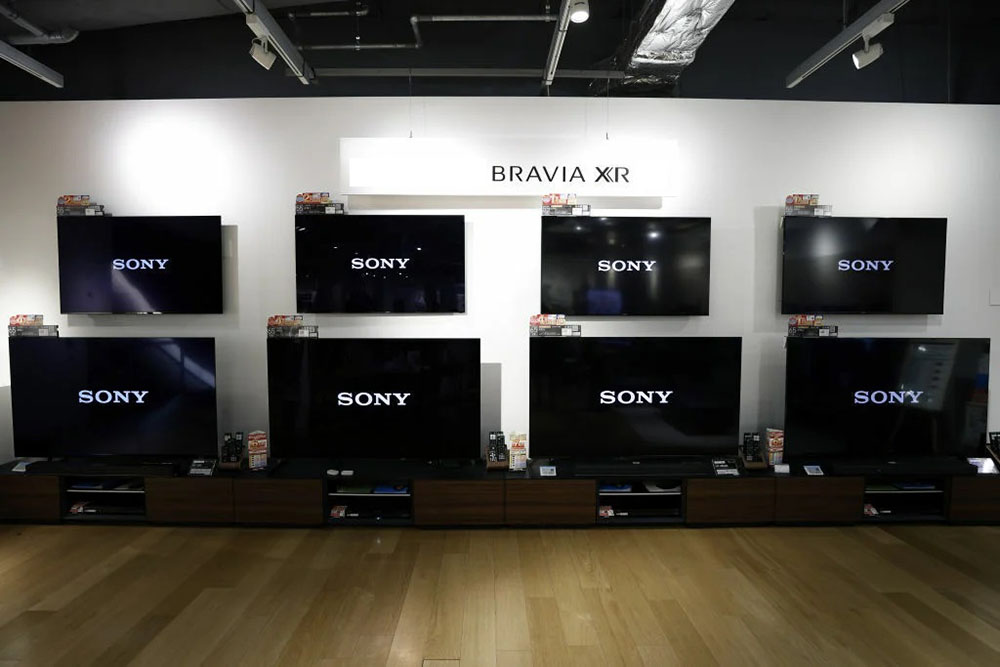
Bravia series
Last but not least is the Bravia series with three models. The X85K that replaces the X85J, the X80K that replaces the X80J and the X72K which is the new entry that comes in 43″ and 50″ sizes.
From the three the X85K is the only one that keeps some of its gaming characteristics as it is the only one featuring a 100/120Hz panel and HDMI 2.1 ports. The X85K and X80K use the less capable X1 4K HDR processor while the X72K uses the even less capable Bravia Engine.
All three feature the simpler Direct LED backlight system but only the X85K and X80K come with the X-Balanced audio system and Google TV. The X72K settles for a simple 2.0 audio system and uses Android TV instead.
The Bravia series still comes with plenty of features but some of the more advanced ones have been stripped like IMAX Enhanced along with Bravia Core. Interestingly all of them still support Dolby Vision.
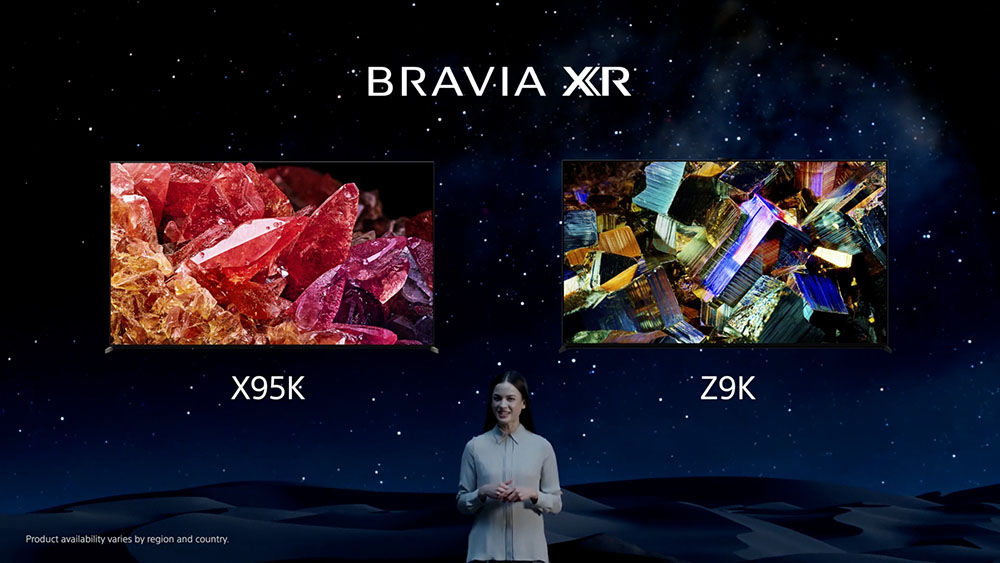
Another 2021 return
It seems that the A90J is not the only 2021 model that is retained in their 2022 lineup as we also find the 32″ W800 still being part of the new release table. Being the only 32″ TV in Sony’s arsenal it is obvious why the manufacturer decided to keep it in circulation.
New tech for 2022
Looking at the entire release table it is very obvious where Sony put most of their attention this year. The introduction of the new QD-OLED in their OLED series and the new miniLED models in their LED LCD series are the interesting new developments to look for.
In terms of features not a lot is going on as most of what we had seen in 2021 make a comeback. We do find small additions with a couple of new calibrated modes, the new optional Bravia Cam and the redesigned remote but other than these no other major development is made this year.
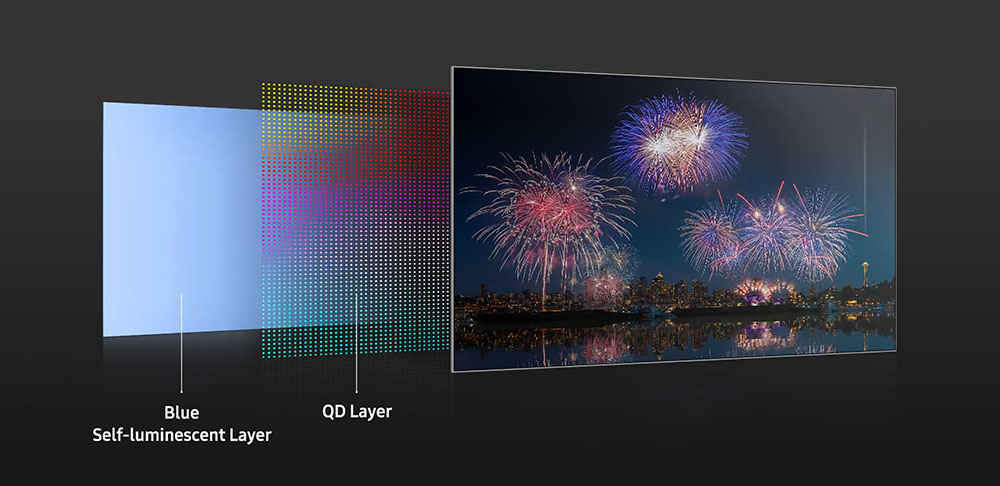
New QD-OLED panel
Last year was a first for Sony to feature an OLED TV with a heatsink, a technology that Panasonic brought to the market first in order to boost the brightness to higher levels without risking damaging the panel.
In 2022 Sony brings for the first time the QD-OLED technology to the market and in theory the new panel is capable of pushing higher brightness and more colors than the traditional WRGB panels used until now.
The A95K is the only TV that will be using this new technology and it will be interesting to see if it is as good as it seems to be. Stay tuned for our A95K review that will come in the near future.
New miniLED LCD TVs
Sony may have been the first out of the gate with QD-OLED along with Samsung but when it comes to miniLED they are a year late as Samsung beat them to it in 2021. But as they say, better late than ever, so Sony uses the more advanced miniLED system in only their two most advanced LED LCD TVs, the 8K Z9K and the 4K X95K.
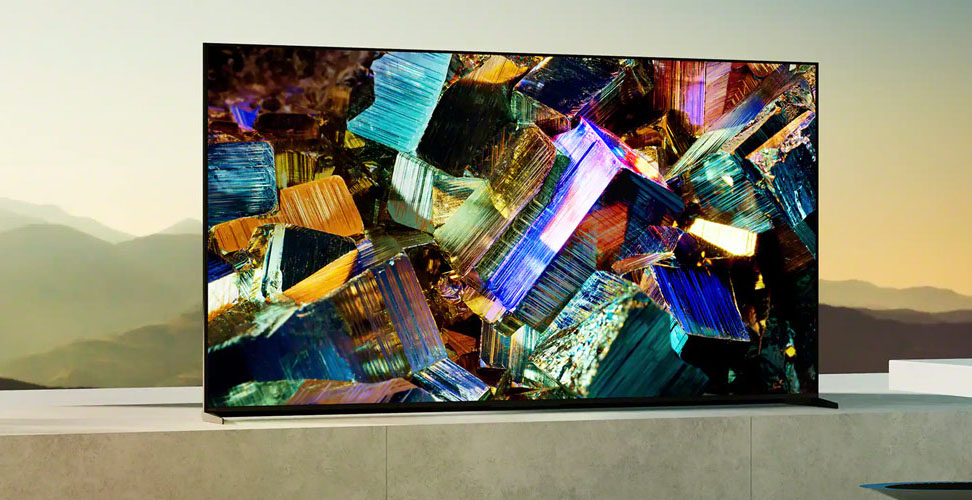
The new miniLED backlight features LEDs that are smaller than what traditional FALD backlight systems were using up to now which means that they can push even higher brightness with even better light control and accuracy.
New Calibrated modes
There are not many additions when it comes to settings but we do get a couple of interesting ones. Bravia Core Calibrated Mode gives you the most accurate picture, according to Sony while the new Netflix Adaptive Calibrated Mode adjusts the picture to match the viewing environment.
Bravia Cam
It seems that most of their TVs support the new Bravia Cam which is an optional accessory that can be purchased separately and will further enhance the functionality of the TV being connected to.
With the Bravia Cam the TV can detect where you sit in the room and adjust the picture and audio accordingly. Other functions include gesture control and power saving features among others.
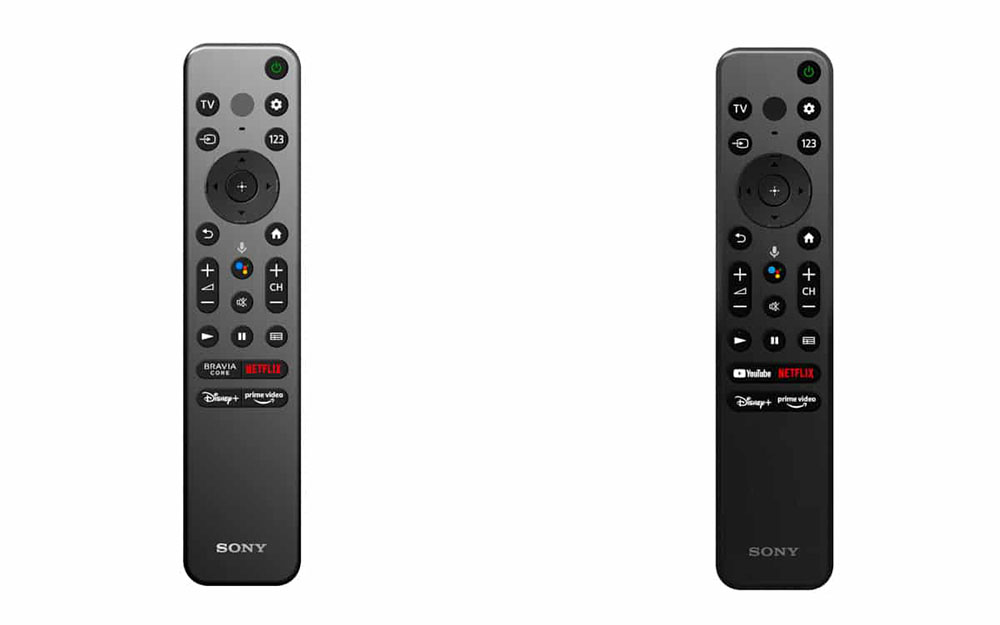
New Simple Remote
In 2022 Sony continues to improve on their remotes and now Sony TVs come with something that actually resembles a smart remote. This means that this year the remote’s buttons have been reduced as the numerical pad has been taken out (there is a simple button for that, that brings a numerical pad on screen) and there has been a bit of a layout change.
As a result the remote of 2022 feels simpler, less cluttered and easier to handle. Design wise all 2022 models get the same remote. The only aesthetic difference is that this comes with a plastic body for the mid and lower tier offerings while the more expensive models use one made of metal.
Closing
The new QD-OLED is surely the one that most people will look for but Sony has plenty interesting things going on this year. It will be interesting to see how their miniLED TVs will do compared to the other manufacturers that already enter their 2nd generation.
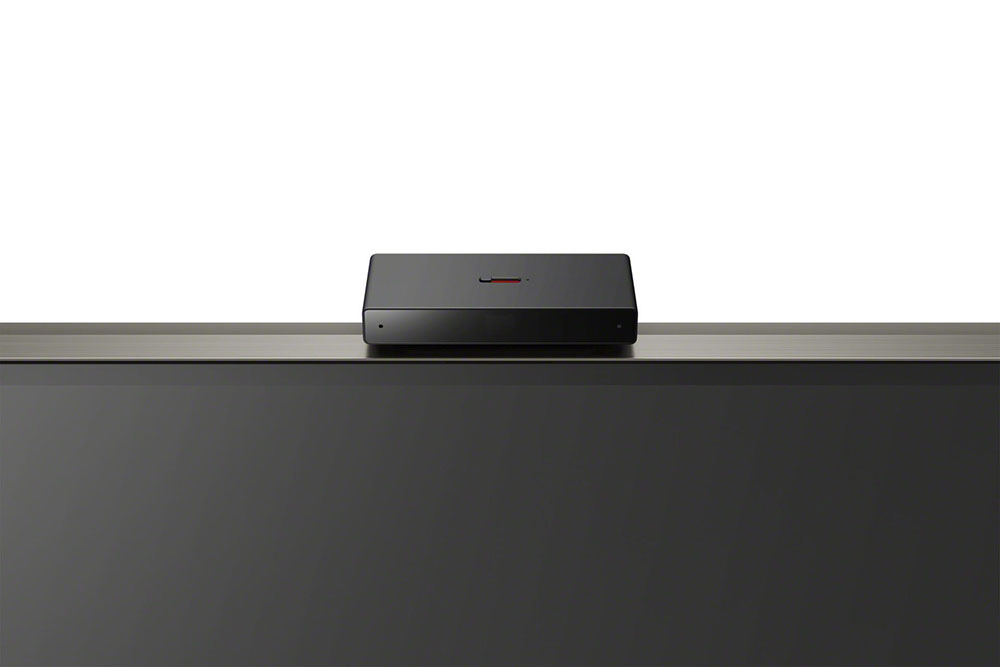
Also small refinements here and there show that nowadays there is not much that manufacturers can add in terms of extra features and most of their attention goes to new panel technologies instead.
Overall another exciting year for the TV market and for Sony and the battle will start to heat up as the new offerings will slowly crawl into the markets until the beginning of the summer.
As always to keep things as simple as possible we have added comparison tables at the beginning and end of this guide in order to have a way of comparing between the most significant features of each new TV directly.
Before closing this part we should mention that you can check our New Product Lineups section for more reviews and articles which we will update as we manage to get our hands on these new releases.
So without further delay let’s analyze each model separately.
Sony TVs 2022
Sony A95K (4K QD-OLED TV)
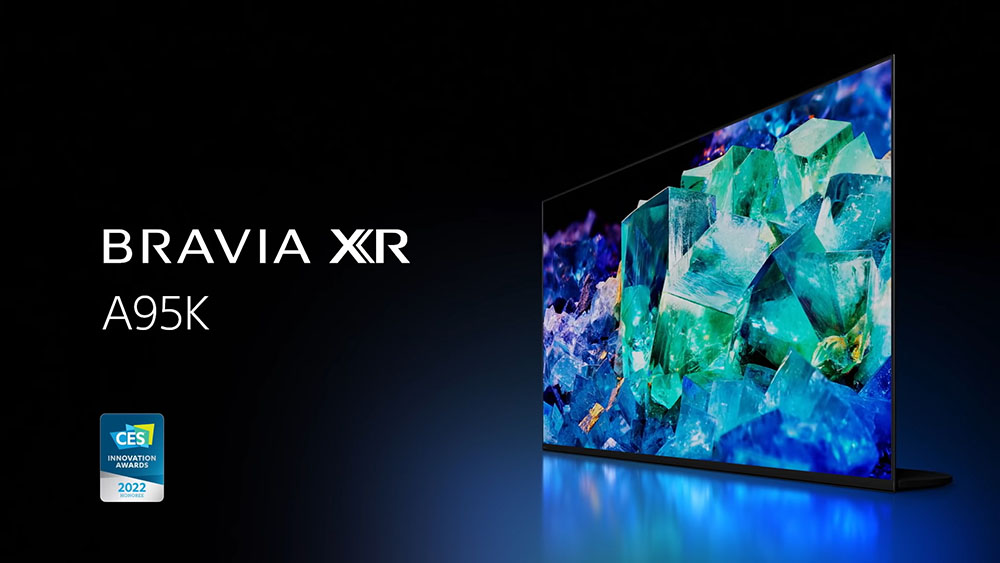
Type : Flat
The Sony A95K is the first QD-OLED in the market that promises to offer higher brightness and better colors than traditional OLED panels are capable of. The A95K belongs in Sony’s Master series and comes with all top tier technologies including a 100/120Hz panel, Cognitive Processor XR and Acoustic Surface Audio+.
As with most of Sony TVs there are two HDMI 2.1 ports that are capable of not only 4K@120Hz but also support VRR and ALLM.
The new A95K come in two sizes with 55″ and 65″ the ones available.
You can find our full analysis and test of this TV in our Sony A95K review article.
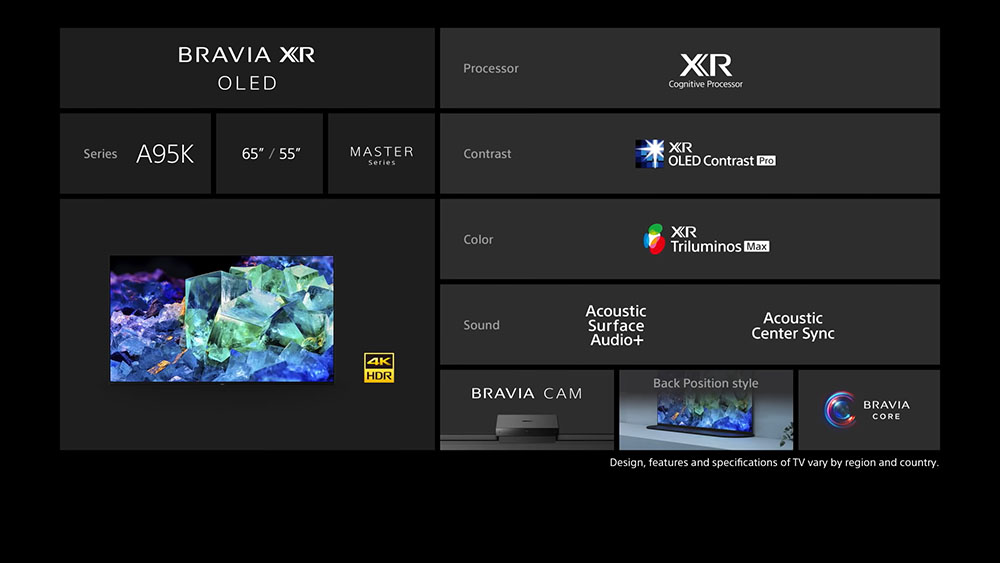
Specifications
- 4K resolution (3,840 x 2,160)
- QD-OLED display technology
- 100/120Hz frequency
- Cognitive Processor XR
- HDR10, HLG and Dolby Vision support
- Acoustic Surface Audio+
- Google TV, Bravia Core, IMAX Enhanced
- 2 x HDMI 2.1 / 2 x HDMI 2.0
- ARC / eARC, VRR, ALLM, HFR
- WiFi5, Bluetooth
Sony A90K (4K OLED TV)

Type : Flat
The A90K is a bit of a strange one. At first you may think that this one replaces last year’s A90J but this is not entirely true. First of all the A90K is missing the heatsink the A90J uses in order to push the panel’s brightness even higher. Secondly it comes only in the smaller 42″ and 48″ sizes.
This is the reason why Sony decided to keep the A90J in circulation for one more year and the A90K should be seen more of an extension to that model rather than a direct replacement.
As for its specs it retains all the top tier features as the rest of the OLED series.
You can read our full analysis and verdict of this TV in our dedicated Sony A90K review article in the link.
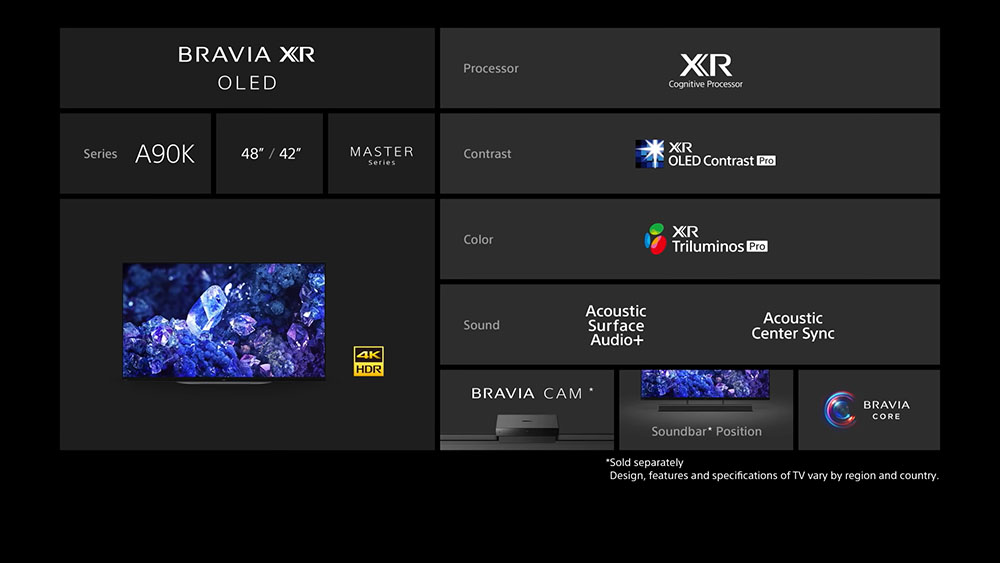
Specifications
- 4K resolution (3,840 x 2,160)
- OLED display technology
- 100/120Hz frequency
- Cognitive Processor XR
- HDR10, HLG and Dolby Vision support
- Acoustic Surface Audio+
- Google TV, Bravia Core, IMAX Enhanced
- 2 x HDMI 2.1 / 2 x HDMI 2.0
- ARC / eARC, VRR, ALLM, HFR
- WiFi5, Bluetooth
Sony A80K (4K OLED TV)
Similar models : A83K, A84K
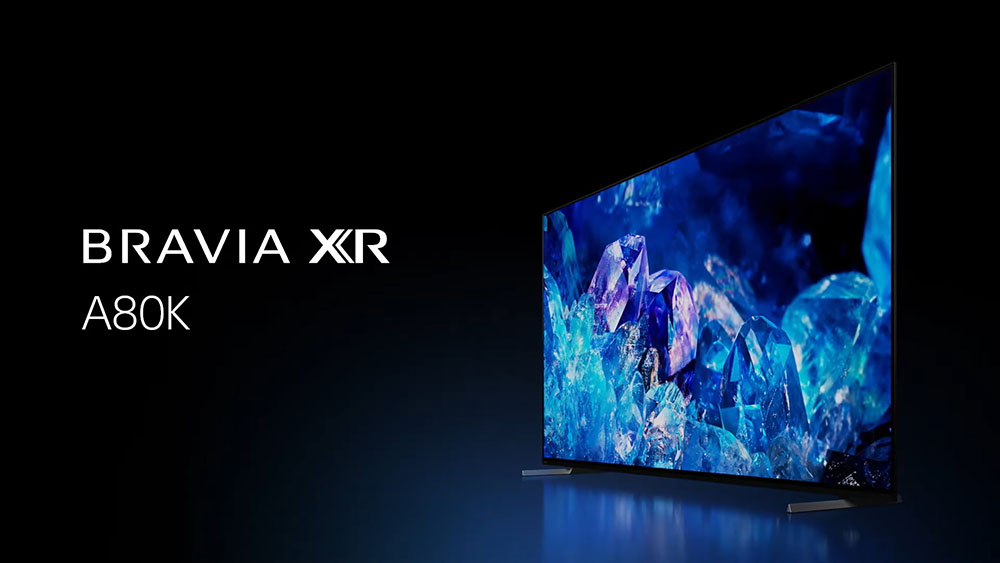
Type : Flat
In contrast to the A90K, the A80K seems to be a more direct replacement of the 2021 A80J. The A80K belongs to the middle tier Bravia XR series but in terms of specifications it is not much different than the A90K.
The most obvious difference is that this one if offered in three bigger sizes with 55″, 65″ and 75″ available.
You can read our full review of the Sony A80K with detailed analysis and tests in the link HERE.
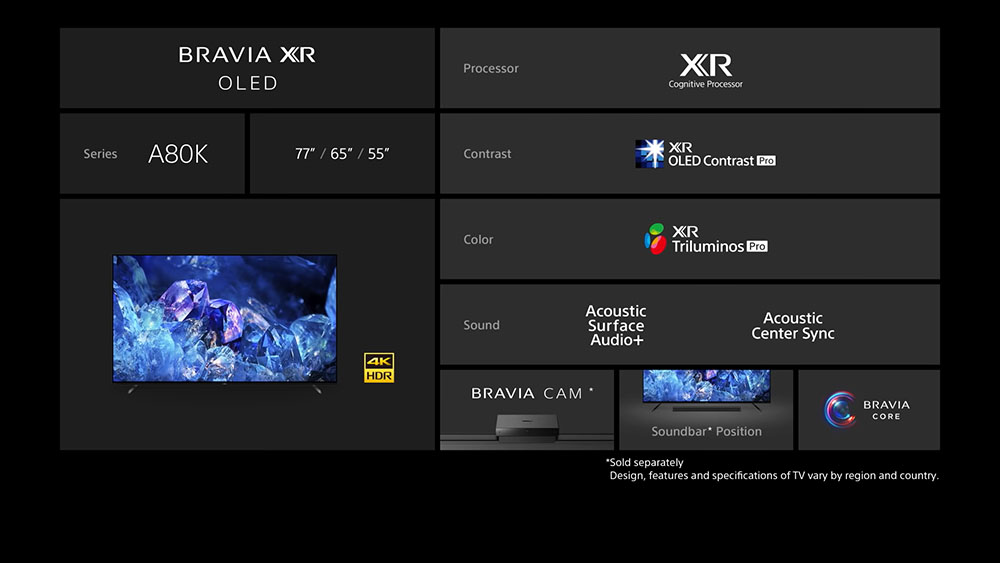
Specifications
- 4K resolution (3,840 x 2,160)
- OLED display technology
- 100/120Hz frequency
- Cognitive Processor XR
- HDR10, HLG and Dolby Vision support
- Acoustic Surface Audio+
- Google TV, Bravia Core, IMAX Enhanced
- 2 x HDMI 2.1 / 2 x HDMI 2.0
- ARC / eARC, VRR, ALLM, HFR
- WiFi5, Bluetooth
Sony A75K (4K OLED TV)
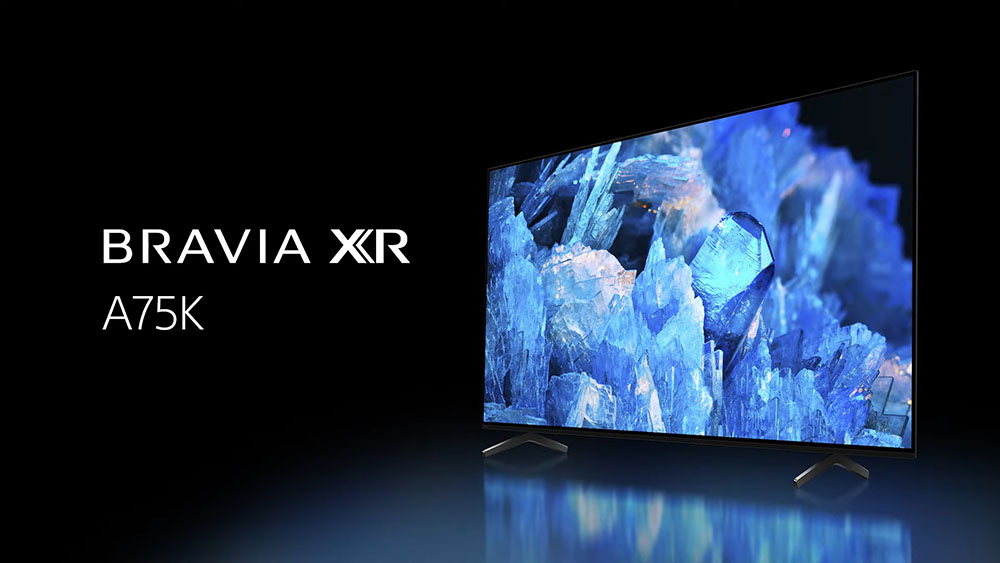
Type : Flat
The A75K seems to be the new entry in the OLED family for Sony and it looks like this one is meant only for select markets in Europe and elsewhere.
Coming at two available sizes the A75K is very similar to the A80K with the most obvious changes being the more simplified audio system and the different design in order to bring the price even lower to more affordable and consumer friendly levels.
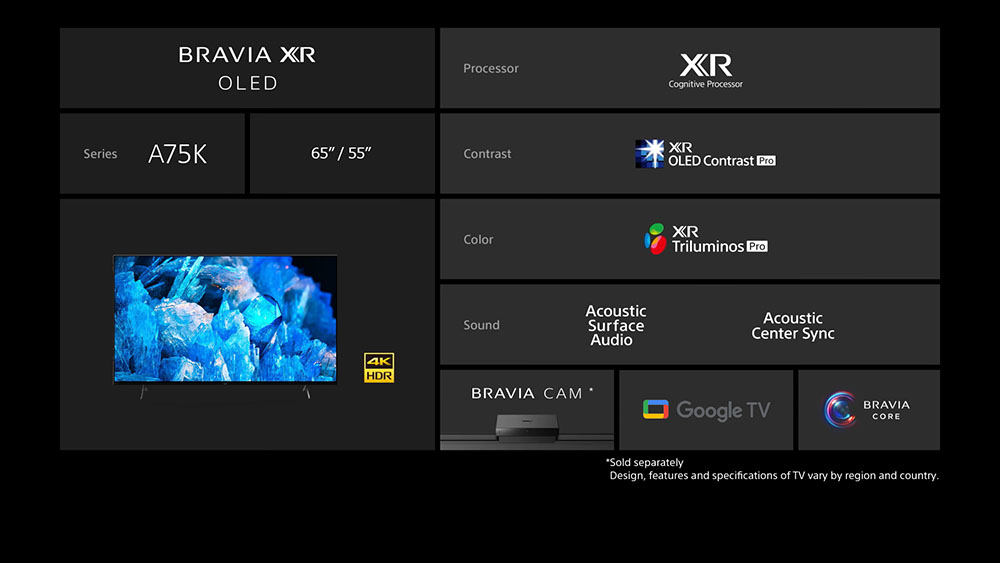
Specifications
- 4K resolution (3,840 x 2,160)
- OLED display technology
- 100/120Hz frequency
- Cognitive Processor XR
- HDR10, HLG and Dolby Vision support
- Acoustic Surface Audio
- Google TV, Bravia Core, IMAX Enhanced
- 2 x HDMI 2.1 / 2 x HDMI 2.0
- ARC / eARC, VRR, ALLM, HFR
- WiFi5, Bluetooth
Sony Z9K (8K miniLED LCD TV)

Type : Flat
The Sony Z9K is the only 8K TV available from this manufacturer in 2022 and with 8K’s failure to gain traction we don’t see this changing in the foreseeable future.
The Z9K is the first miniLED TV out of the gate for Sony and comes only in 75″ and 85″ sizes. In terms of specs it comes with all the top features with the only exception being in the audio that features the less capable, compared to the top OLEDs, Acoustic Multi-Audio.
Strangely the Z9K seems to be the only Sony TV that comes with 3 HDMI 2.1 ports instead of 2 but other than this its capabilities and characteristics remain the same.
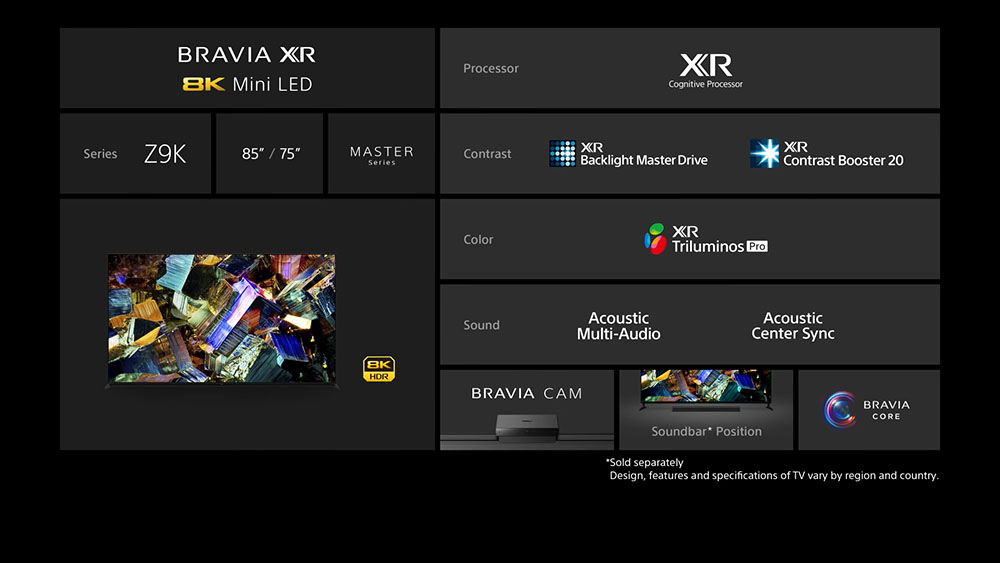
Specifications
- 8K resolution (7,680 x 4,320)
- miniLED LCD display technology
- 100/120Hz frequency
- FALD Backlight system
- Cognitive Processor XR
- HDR10, HLG and Dolby Vision support
- Acoustic Multi-Audio
- Google TV, Bravia Core, IMAX Enhanced
- 3 x HDMI 2.1, 1 x HDMI 2.0
- ARC / eARC, VRR, ALLM, HFR
- WiFi5, Bluetooth
Sony X95K (4K miniLED LCD TV)
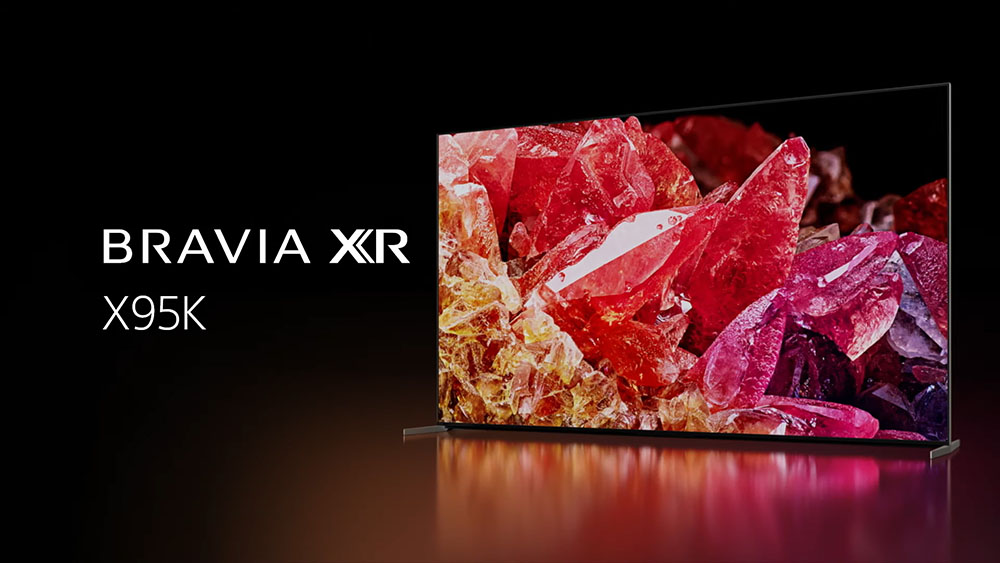
Type : Flat
The X95K is the other miniLED TV from Sony and this is a 4K one. It also comes in 75″ and 85″ but this one will also be released in the more affordable 65″ size.
In terms of specifications the X95K is similar to the Z9K and the only change is that here we get 2 HDMI 2.1 ports along with another 2 HDMI 2.0.
You can read our full analysis of this TV in our Sony X95K review link.

Specifications
- 4K resolution (3,840 x 2,160)
- miniLED LCD display technology
- 100/120Hz frequency
- FALD Backlight system
- Cognitive Processor XR
- HDR10, HLG and Dolby Vision support
- Acoustic Multi-Audio
- Google TV, Bravia Core, IMAX Enhanced
- 2 x HDMI 2.1, 2 x HDMI 2.0
- ARC / eARC, VRR, ALLM, HFR
- WiFi5, Bluetooth
Sony X90K (4K LED LCD TV)
Similar models : X90S, X92K, X93K, X94K
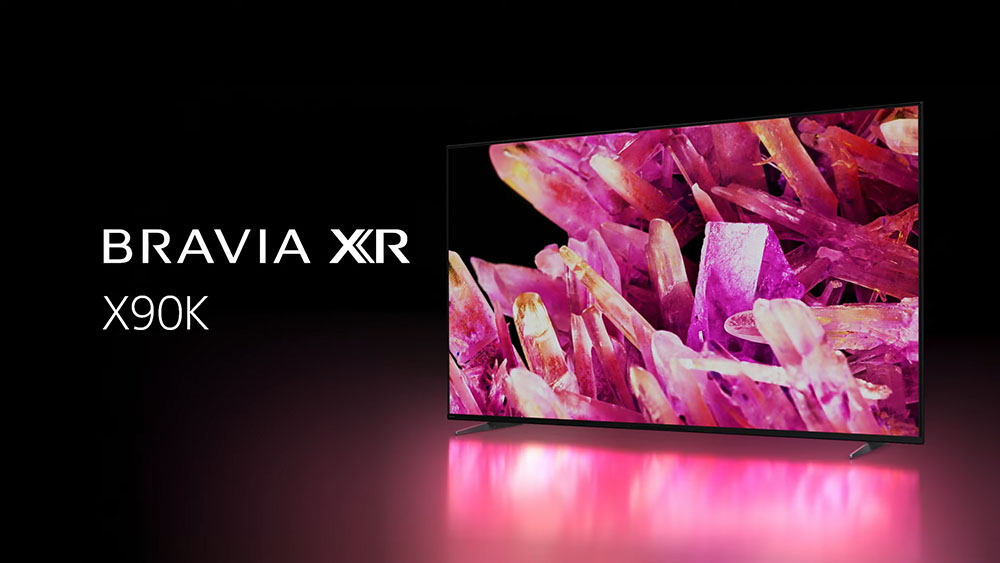
Type : Flat
The X90K is the last model in the Bravia XR series and here we enter the more traditional LED LCD TV territory.
The X90K is replacing the X90J and features a Full Array with Local Dimming (FALD) backlight along with a 100/120Hz panel. This is also the last model that comes with the Cognitive Processor XR along with a few more advanced specs like Bravia Core and IMAX Enhanced support.
Our full analysis of the Sony X90K can be found in the link HERE.
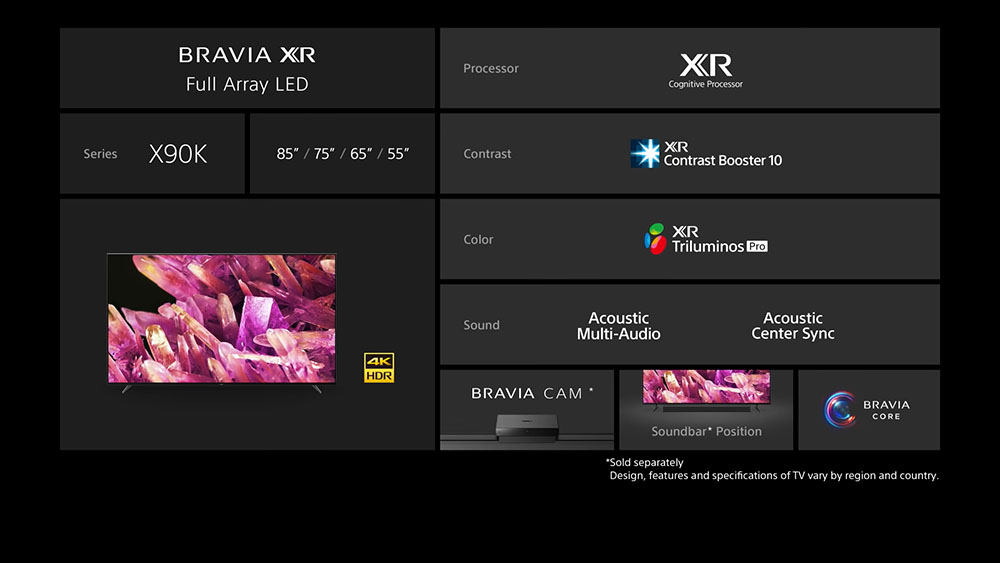
Specifications
- 4K resolution (3,840 x 2,160)
- LED LCD display technology
- 100/120Hz frequency
- FALD Backlight system
- Cognitive Processor XR
- HDR10, HLG and Dolby Vision support
- Acoustic Multi-Audio
- Google TV, Bravia Core, IMAX Enhanced
- 2 x HDMI 2.1, 2 x HDMI 2.0
- ARC / eARC, VRR, ALLM, HFR
- WiFi5, Bluetooth
Sony X85K (4K LED LCD TV)
Similar models : X86K, X89K
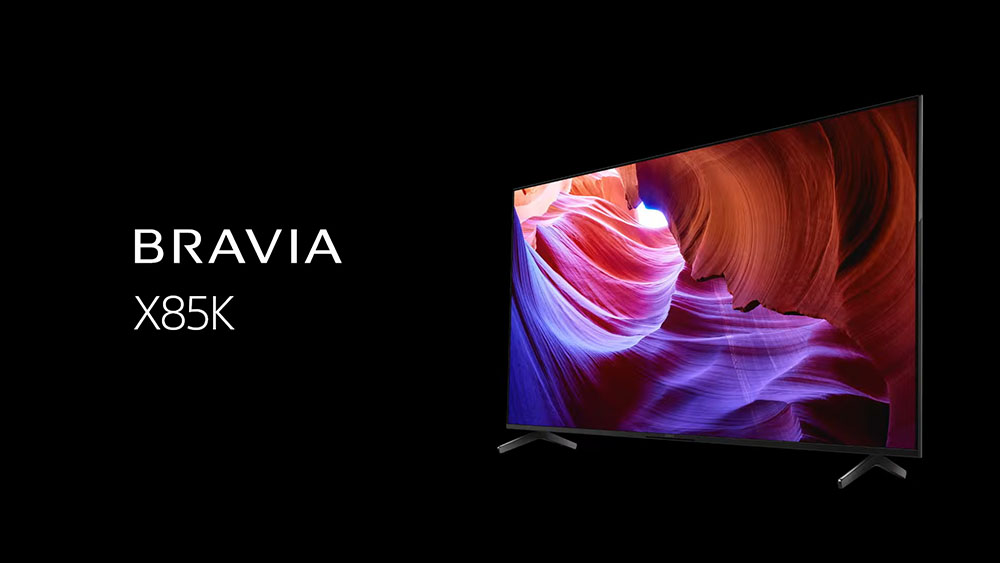
Type : Flat
The X85K will be released in no less than 6 sizes and not without reason. Sony seems to be counting a lot on this model as it is the cheapest offering they have that includes HDMI 2.1 ports and thus is going to be very popular among gamers.
But the TV is loosing a few of the more advanced specs and thus here we find the less capable X1 4K HDR processor along with a Direct LED backlight instead of FALD. Audio is also downgraded as we find a simpler X-Balanced system but at least the TV still has VRR and ALLM support. It’s also the cheapest model with a 100/120Hz panel.
You can read our full analysis in our Sony X85K review.
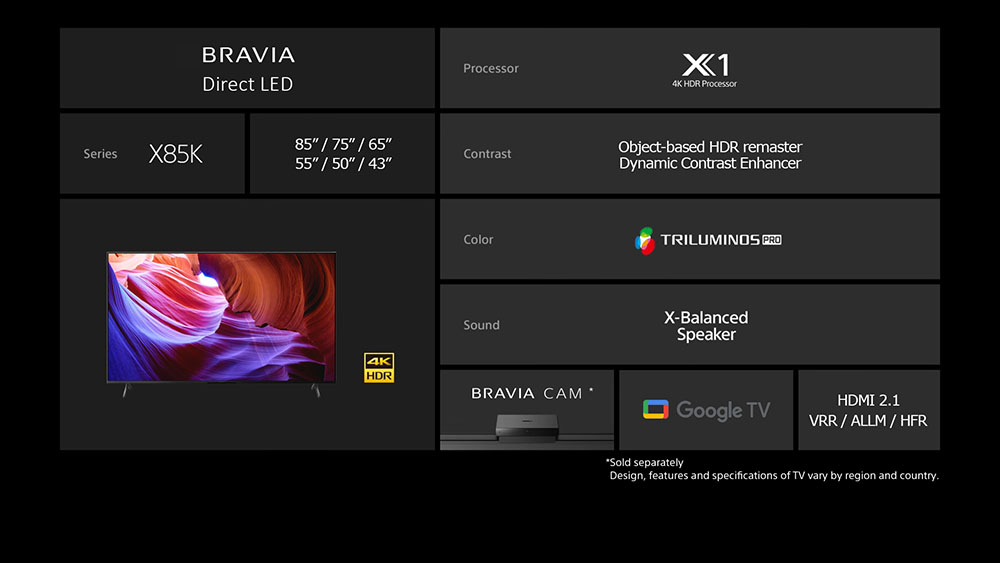
Specifications
- 4K resolution (3,840 x 2,160)
- LED LCD display technology
- 100/120Hz frequency
- Direct LED Backlight system
- X1 4K HDR Processor
- HDR10, HLG and Dolby Vision support
- X-Balanced audio
- Google TV
- 2 x HDMI 2.1, 2 x HDMI 2.0
- ARC / eARC, VRR, ALLM, HFR
- WiFi5, Bluetooth
Sony X80K (4K LED LCD TV)
Similar models : X81K, X82K
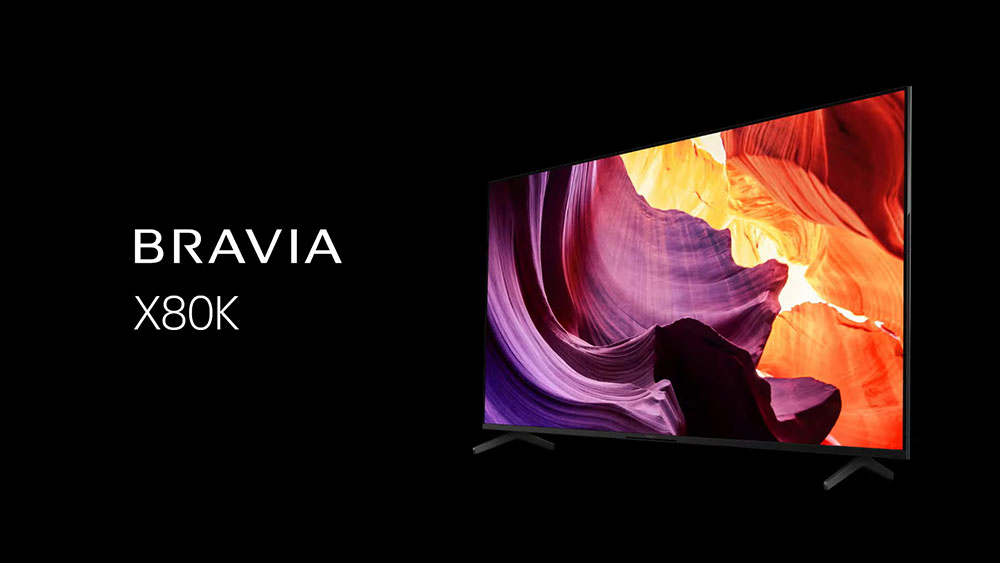
Type : Flat
The X80K is a lower tier TV that has two main differences compared to the X85K above. It has a 50/60Hz panel instead of a 100/120Hz one and comes with 4 HDMI 2.0 ports.
As you understand this one is stripped of most of the gaming features we find in the above models and can be considered mostly a low cost, all around option. At least it still features Google TV along with all its smart and online features.
You can read our full analysis in our Sony X80K review.
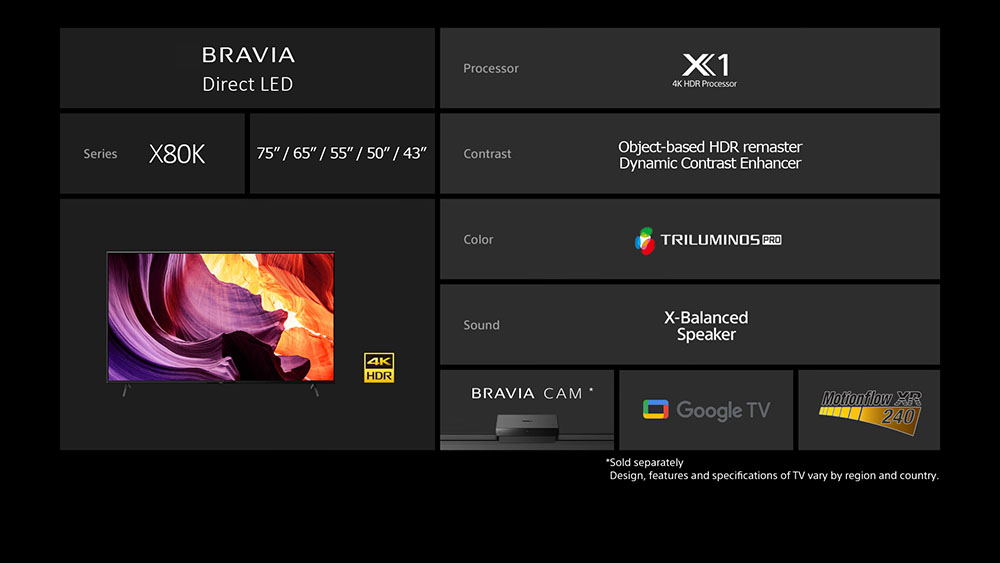
Specifications
- 4K resolution (3,840 x 2,160)
- LED LCD display technology
- 50/60Hz frequency
- Direct LED Backlight system
- X1 4K HDR Processor
- HDR10, HLG and Dolby Vision support
- X-Balanced audio
- Google TV
- 4 x HDMI 2.0
- ARC / eARC, ALLM
- WiFi5, Bluetooth
Sony X72K (4K LED LCD TV)
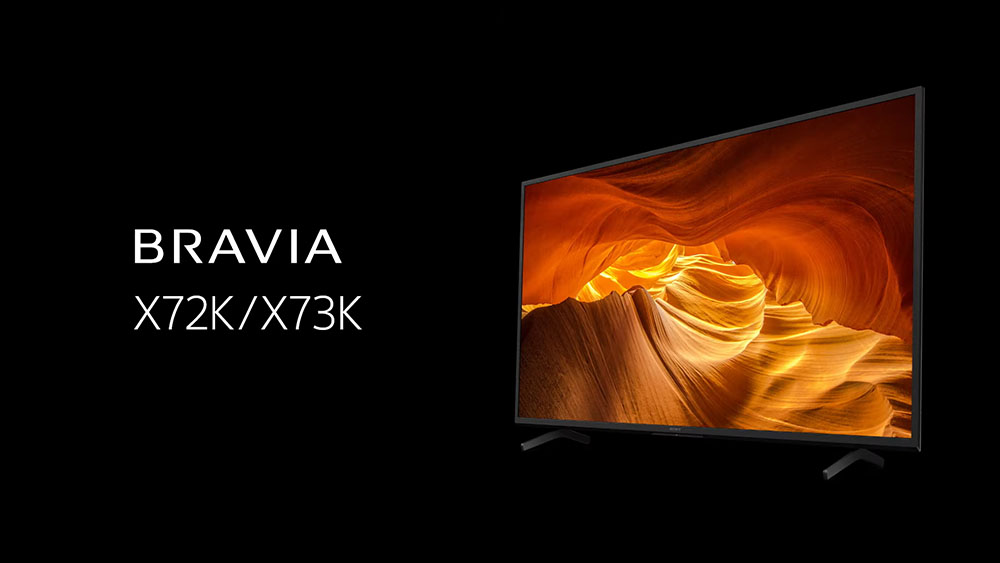
Type : Flat
At the bottom of the list we find the X72K and here we get even further reductions in specs compared to the X80K. This model is loosing the X1 processor and instead settles for Bravia Engine, the X-Balanced speakers are replaced with a duo of traditional ones while Google TV is replaced with Android TV.
This is the cheapest 4K you can get from Sony in 2022.
Specifications
- 4K resolution (3,840 x 2,160)
- LED LCD display technology
- 50/60Hz frequency
- Direct LED Backlight system
- Bravia Engine
- HDR10, HLG and Dolby Vision support
- Android TV
- 4 x HDMI 2.0
I have a 55″ Panasonic LCD TV at home since 2016. Perhaps it is time to consider a new TV for my home entertainment system.
The new Sony OLED model using Samsung panel seem rather interesting to look at. MiniLED backlight type of TV is also getting in mainstream in recent years. I am seeing more of it in various application. Glad to know Sony is in it as well.
The 85″ model seem impressive and I will be shortlisting it for comparison with the cheaper alternative – Redmi Max 86″ Ultra TV. Redmi has been selling big volume in our country in Singapore from China manufacturer.
It will be a big challenge for Sony to stay competitive in the mass market. Nevertheless, Sony brand is still highly valuable in Singapore for the high-end market.
The A95K is surely the one that will draw a lot of attention this year. But being a 1st generation product if it was me I would wait for a year for the technology to mature before pulling the trigger. QD-OLED is certainly very promising but no matter how good it is, it’s new technology and surely it needs time to mature.
Thanks for the overview!
We have a 4k, 65″ Sony at the moment that is probably about 6-7 years old. It still works fine but upgrading to an 8k TV would be ideal! Having Chromecast and Google Assistant built-in sounds good too – I remember when we got our current TV, friends were commenting on the fact that Netflix was built-in and included on the remote control, haha.
Do you think the price difference between the Bravia XR and Bravia XR Master Series is justified? Or would be getting good value with the standard XR?
Also, do you have a review on QD-OLED vs miniLED?
Hello Victoria. To be honest an 8K TV right now is simply not worth it. You better spend the budget to a top tier 4K set instead. I would suggest the A95K but since its a 1st generation technology I would wait a year for QD-OLED to mature. Instead I would suggest going for the A90J which Sony kept in circulation for another year as it is a proven model, it comes with a heatsink that both the A90K and A80K don’t have and is still considered one of the best OLEDs even today.
As for the Sony QD-OLED A95K and their miniLED models we are going to review them pretty soon so keep checking our website for our analysis.
Hi teacher, good time, sorry, I have a question, how is the Sony z9k TV? Second, it is worth buying now, if someone buys it, I will change it in 10 years, because I change it from time to time.. The next question is, should I get the 75 inch x95k model or should I wait and get the x93L, what is your opinion, sir? And the 75 inch TVs that I mentioned bother the eyes at a distance of 1 meter, for example, are the pixels of the TV visible? Thankful
Hey there. Personally I do not suggest you go for the Z9K. Why pay for an 8K TV when there is no 8K content to take advantage of it? As for the X95K vs the X93L, these are practically the same TVs with the only difference being the X93L comes with some added software for 2023. So if you can find them at the same price then surely go for the X93L. As for your last question I think that 75″ from 1 meter is far too close. Obviously this is very much a personal matter but for me anything less than three meters on a 75″ is too close.
Thank you for the information you give us. So you say that 75 inches under 3 meters should be taken, so 65 inches is enough? Of course, my house is 6 meters away from the TV and the width is 5 meters, but those who sit on the sofa are the last person 1 meter away from the TV, so it is more balanced at 65 inches. What TV has replaced x95k now? Of course, the value of the purchase in terms of image quality compared to the previous 65-inch TVs, if I want
I want a TV that is very good in terms of image quality, movies, sports, and then games, and it is responsive for 8 to 10 years and has excellent quality, because I change TVs, that’s why I personally prefer Sony TVs in terms of quality. Image creation and chipset… What would you suggest to us? About Sony TV
The X95L and X93L are the ones replacing the X95K. If you want a TV with great image quality then go for an OLED. At least this is what I would do.
As for your first question there is no right or wrong size. The right TV size is the one that feels good for you and for the distance you will use it. So my suggestion is to see different sizes in a shop and decide for yourself what is best.
Thank you for your guidance and the information you gave us. The reality is that OLED TVs have a less stable image over time. They say that the image will burn or burn. If I am not mistaken, it will happen, so I will go for the x95L. Have you heard of any changes that have been added compared to before, and if so, what are the changes? Changing the Sony 2023 TV is it really worth waiting to get x95L or X95K, of course, if there are no changes? Thank
The X95L comes with some minor upgrades like an upgraded processor and slightly better audio system. So if you want the absolute best from these two then go for this year’s X95L.